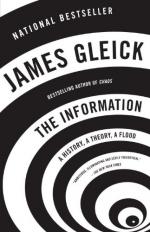
|
| Name: _________________________ | Period: ___________________ |
This test consists of 5 multiple choice questions, 5 short answer questions, and 10 short essay questions.
Multiple Choice Questions
1. What does the author compare the famous library to?
(a) Search engines.
(b) The Encyclopedia Brittanica.
(c) Quantum data storage.
(d) The online encyclopedia Wikipedia.
2. Why do scientists view quantum particles in terms of probability?
(a) The exact properties of quantum particles change.
(b) The exact properties of quantum particles are unknown.
(c) The exact properties of quantum particles are dynamic.
(d) The exact properties of quantum particles are not stable.
3. The elements of DNA come in predictable proportions of what shape?
(a) Figure eight.
(b) Infinity symbol.
(c) Double spiral.
(d) Double helix.
4. Chaotic looking numbers may have simplistic algorithms but why are many difficult to determine?
(a) It is impossible to work back from the number to find them.
(b) The number is too complex.
(c) Because they are not computable.
(d) The number is too difficult to compress through computation.
5. Why is the belief in God an enduring one?
(a) Beliefs are the only concepts that are passed on.
(b) The memes retain beliefs.
(c) Belief of God has been with mankind since the beginning.
(d) The belief is inherited.
Short Answer Questions
1. What did mathematician Gregory Chaitin propose about Shannon's concept of entropy as uncertainty?
2. What did the study of thermodynamics not state about the movement of energy?
3. Recognizing a famous painting like the Mona Lisa is attributed to what factor?
4. "Entropy" was first used by what individual to describe the unavailability of energy?
5. What did cosmologist George Gamow immediately recognize about DNA as a code and proposed that it could be deciphered mathematically?
Short Essay Questions
1. What was Erwin Schrodinger's theory about "genes"?
2. What fundamental problem is inherent in the observation of quantum particles?
3. What did Dawkins attribute the belief in God to?
4. What was the original meaning of the term "entropy"?
5. How did Erwin Schrodinger used the concept of "entropy"?
6. What are major differences between Wikipedia and the Encyclopedia Brittanica?
7. What was the "Library of Babel" that was described in a story by Jorge Luis Borges?
8. What are examples of memes?
9. What was zoologist's Richard Dawkins' theory on DNA?
10. What did IBM research Charle Bennet write about "information" in the 1980s?
|
This section contains 727 words (approx. 3 pages at 300 words per page) |

|




